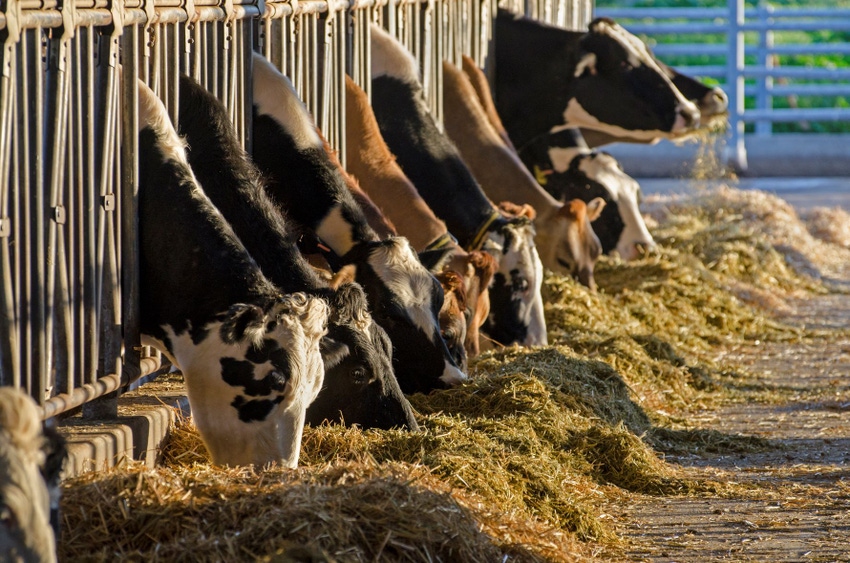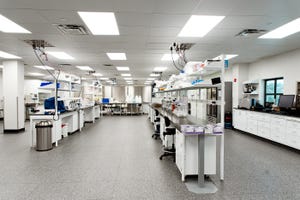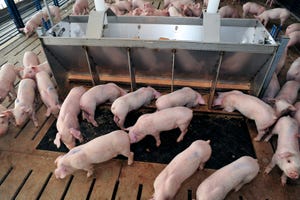California RNG program may be a model pork industry could explore
Technology implemented by dairies across the state has reduced greenhouse gases by 2 MMT.

When the National Pork Board released its first official U.S. Pork Industry Sustainability Report last month, greenhouse gas guru Frank Mitloehner applauded the efforts thus far by the nation's pork producers as well as the industry's new goal aiming to reduce greenhouse gas emissions by 40% by 2030. The combination of improving reproduction, installing veterinary systems, enhancing the genetic merit of feed, plants and animals, and feeding more energy dense diets has drastically reduced the environmental footprint of the U.S. livestock sector.
"And the pork industry is one that definitely has done so, and should be proud," says Mitloehner, professor and air quality specialist with the Department of Animal Science and director of the CLEAR Center at the University of California-Davis. "The pork industry has tripled pork production over the last few decades, has drastically increased litter sizes, and we really are the envy of the world in how we produce pork in the United States."
Mitloehner says overall the U.S. agricultural sector has followed suit, which is the "hallmark of sustainability — doing more with less or doing more with constant inputs."
However, Mitloehner points out there is always more to do to improve U.S. agriculture's environmental footprint, such as reducing food waste and finding creative solutions to produce renewable energy. He specifically calls out the California dairy industry's efforts to cover manure lagoons, capture the biogas and make it into a fuel called "renewable natural gas" or RNG. Not only does this approach drastically reduce the carbon footprint of the farm, but it also generates significant carbon credits that can make real financial sense. In Mitloehner's opinion, that dairy success story in California is one the pork industry could explore.
Approved in 2016 by California's Governor Jerry Brown, Senate Bill 1383 is specifically aimed at reducing short-lived climate pollutants such as methane, hydrofluorocarbon gases and human-sourced black carbon. The bill requires the California State Air Resources Board to partner with the California Department of Food and Agriculture in adopting regulations to reduce methane emissions by 40% below 2013 levels by 2030 from livestock and dairy manure management operations.
"Many of our dairies covered their lagoons and these lagoon covers are now trapping biogas, and then the biogas is not burned to make power like it was in the past, but instead they're taking the biogas and they are converting it into a fuel type called renewable natural gas, RNG, and this renewable natural gas is then going into vehicle fleets to replace diesel," says Mitloehner.
The technology has been implemented on dozens of dairies across the state and has already reduced greenhouse gases by 2 million metric tons thus far, Mitloehner says.
"And if you wonder if that's a lot or not, it equates to a total of 30% reduction of greenhouse gases from California's dairy industry manure," he says. "The goal is that 40% and we are already making great head waves, and that is one example of the dairy industry that could easily be adopted by other industries, such as the pork industry."
Because the state of California financially incentivizes the reduction of this gas, by helping with the construction of RNG filling stations and providing a market for it, dairy producers are able to sell their credits and get a really good revenue for that, Mitloehner says.
While this type of approach is focused on manure, Mitloehner says there are other avenues that can be explored for reducing environmental footprint, while also being complimentary to producer profitability.
"We can be part of a climate solution and part of an environmental solution overall, not just producing goods that our population seeks to eat such as bacon and loins and so forth, but also by reducing our overall societal environmental footprint and being part of a solution," Mitloehner says.
About the Author(s)
You May Also Like





